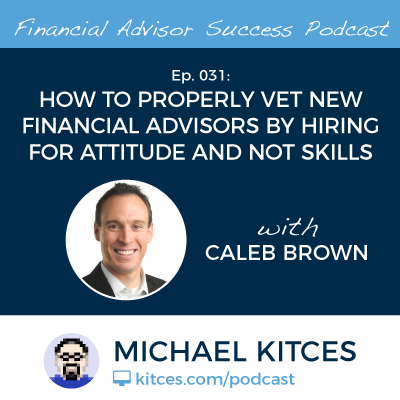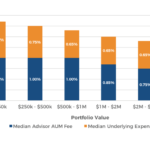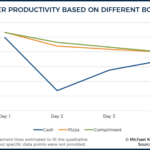 Welcome back to the thirty-first episode of the Financial Advisor Success podcast!
Welcome back to the thirty-first episode of the Financial Advisor Success podcast!
My guest on today's podcast is Caleb Brown. Caleb is the founder of New Planner Recruiting, a recruiting firm that, as the name implies, focuses specifically on hiring newer associate-level financial planners.
What's unique about Caleb's recruiting process, though, is the way that he vets prospective financial planners to determine whether they're likely to be successful in the advisory business in the future, with a strong focus not just on their technical skills, but the initiative and effort that they put into the process of trying to get hired through his recruiting business in the first place. Because the reality is that you can provide education on the book knowledge of financial planning, and train a lot of financial planning skills, but it's almost impossible to teach someone to have that go-getter kind of attitude that it really takes to succeed as a financial advisor.
In this episode, Caleb talks at length about what issues you should consider in the hiring process for a prospective new advisor, the role of using various types of personal and other assessment tools to evaluate potential hires, what you should - and shouldn't - expect your new hire to do and bring to the table to make your advisory business more successful, and what the going rate salary is that you have to pay as an advisory firm to get quality talent.
And be certain to listen to the end, where Caleb talks about his tips on how to work through the inevitable difficult times that arise as an entrepreneur, and how an executive coach has helped him to keep his focus.
So whether you’ve been struggling with finding good financial planning talent for your firm and are looking for ideas on how to better identify and screen potential hires, or you’re a prospective financial planner looking for insight about what it takes to get your foot in the door with a good financial planning firm, I hope you enjoy this latest episode of the Financial Advisor Success podcast!











